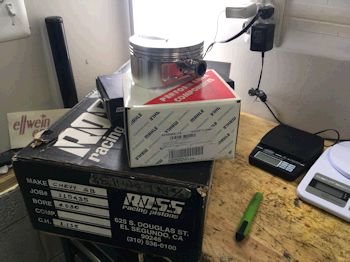
The beginning of any short block project is the rotating
assembly balance. (unless you have a complete balanced
kit). Here are my custom nitrous flat top pistons from Ross.
(I have a set of these in my personal/company car 383LT1 impala SS)
|
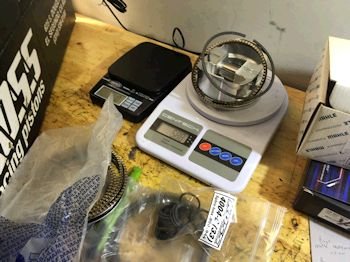
The Callies rods are on order and will be here in a few
days. Then a call goes to Eagle for their 4340 stroker
crankshaft. This crankshaft will come direct from Eagle with
a journal polish and balance. |
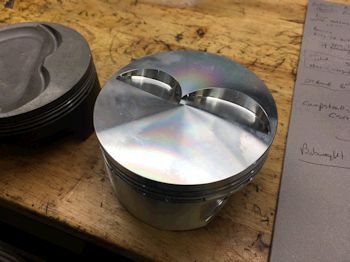
Piston description: This is a custom piston that I had
ROSS make for me a few years ago. I have a set in my personal
383 LT1. The piston crown is .010" thicker than a Mahle
of similar style. In other words the 1st ring land is
0.210" down as opposed to .190".
|

The piston also has a semi-full skirt for rigidity. |
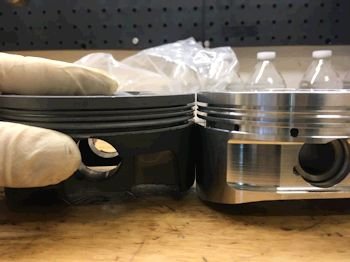
|
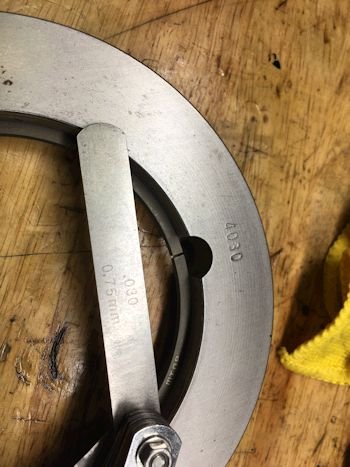
Piston ring gap of .030" 1st ring and .028" 2nd for
large nitrous hits. |
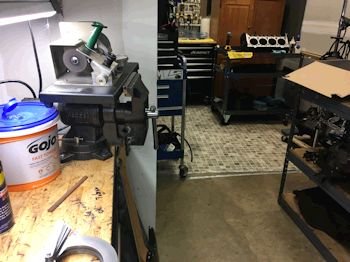
Filing rings.
|
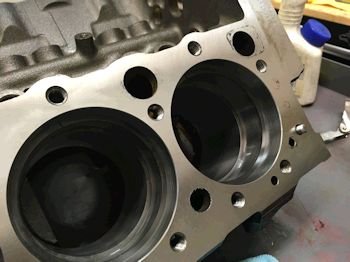
Notice that I had the block decked to
"minimum". I prefer not to take it down to zero
deck, (9.000"). Since the custom piston is .010"
taller compression height then the deck needs to be at least
9.010". |
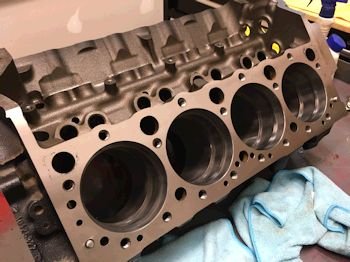
|
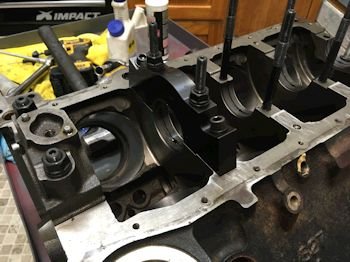
Measuring and fitting main bearings. |
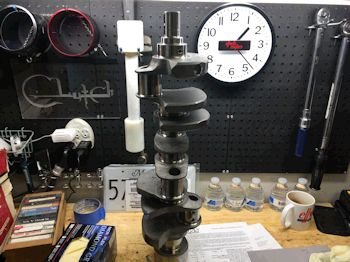
Eagle crank at 1749g bob weight. Serial 47361
|
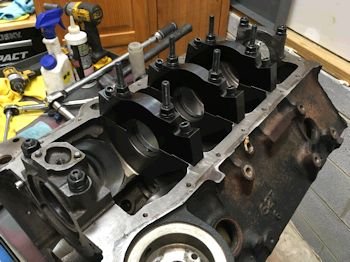
The mains ended up needing 'X' oversized bearings. #1 is
at .0018", #2 = .0022", #3 = .0022, 34 = .0022", #5
= .0030" |
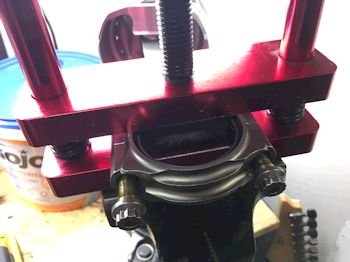
Callies H-beam rods all came out to 0.0024 - .0025" bearing
clearance, (King CR807-XPN)
Rod bolts torqued to 75ft-lb
|

Block marked at area for grinding/clearance. |
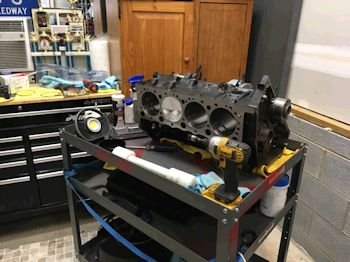
Each rod/piston combo was installed to see where I needed to
clearance. All will be removed and the block will be
clearanced, cleaned and painted.
|

Clearance at 0.0024" |
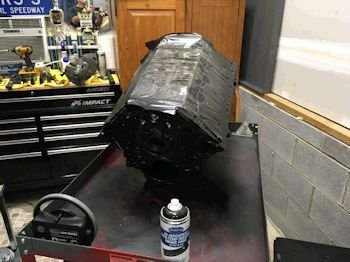
Trying a new paint. $24/can Eastwood.
2-component Urethane catalyzed, oil and gas resistant.
|
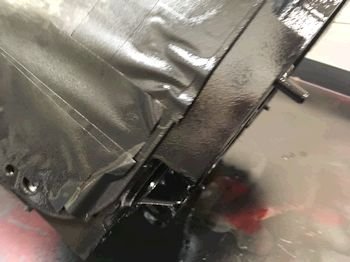 |
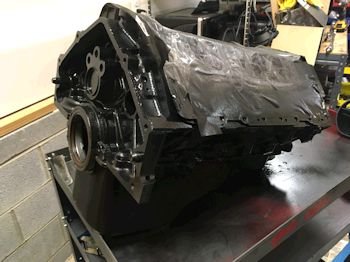
|
I have the space heater nearby and all
the doors open while it dries. I'm hoping this is as durable
as advertised. It is faster than doing POR-15 but about 3
times more expensive. |
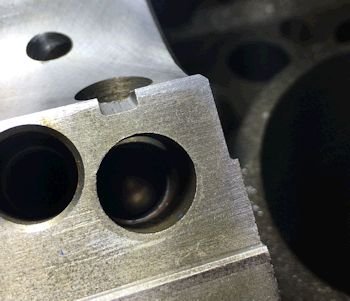
Hard to see it but there is a steel ball-bearing in the oil
galley. I take a photo of this for every engine build for my
own peace of mind.
|
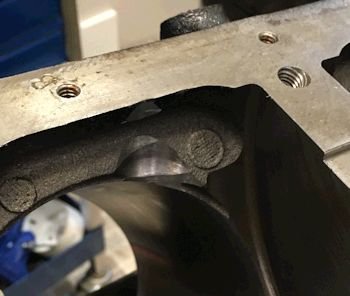
Clearanced for rods. This is not as much clearancing as
required for an Eagle rod engine or a 3.875" stroker. I
did not even have to touch the inner cam tunnel side of the bore. |
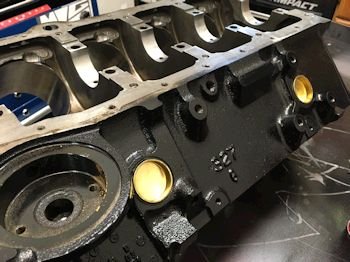
|
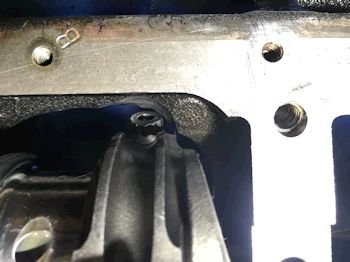
Well this photo makes it look like there is no clearance
here. But there is quite a bit. I'll try to remember
to get another photo prior to shippin. |
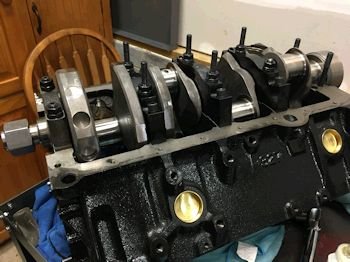
|
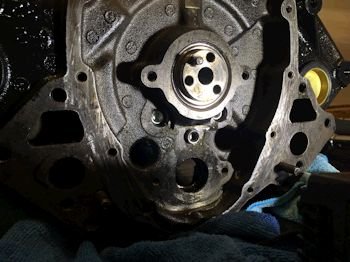
Front oil galleys tapped for threaded plugs. The outer
plugs have oil weep holes to help timing set cooling. The
center cam galley did not get tapped well enough to allow the plug
to thread all the way but I did not want to tap it again, (or have
to wash the block again). I tested for clearance with an old
camshaft and timing set and all is good. |
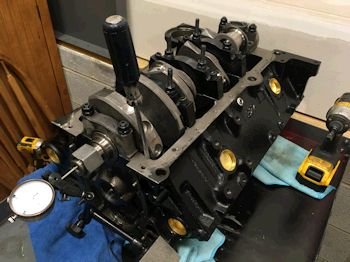
Crank thrust bearing clearance (end play) is .006"
|
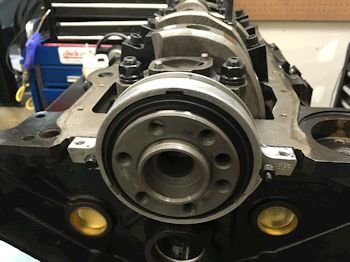
Centered rear main seal housing and Corvette seal. |
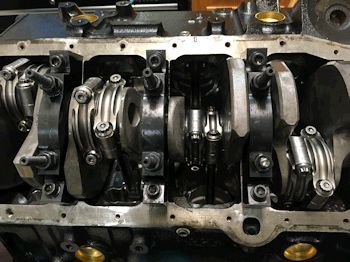
Short block almost finished.
|
 |
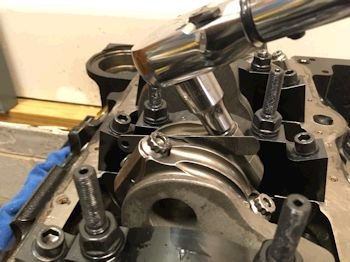
Callies rod bolts at 75ft-lb.
|
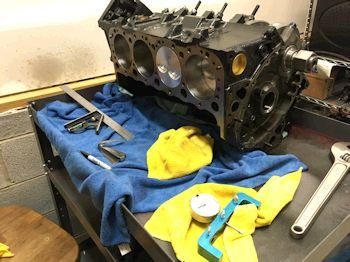
Driver's side pistons at 0.000" |
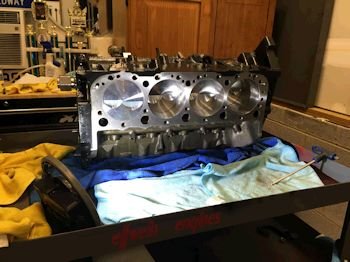
Passenger side pistons at .003" (in the hole). Ideal
to have both sides the same but that is a rare case and this is
closer than most engines to being even.
|
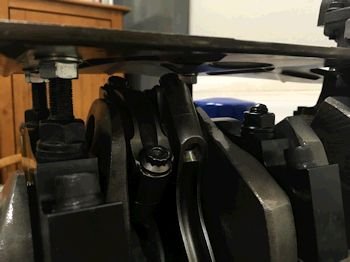
Cleaned up used, (core), windage tray massaged for rod
clearance. |
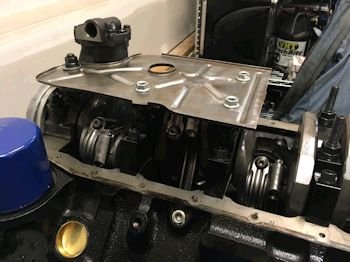
|
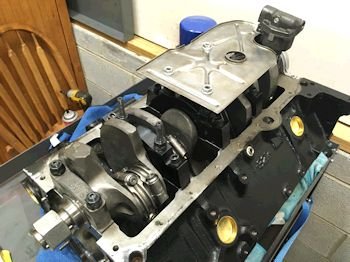
Melling 10554ST oil pump awaiting for pickup tube. |
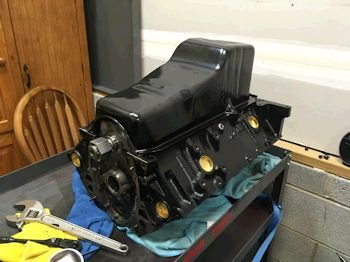
New stock style oil pan massaged for rod bolt clearance..
|
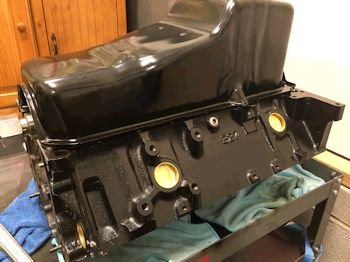
You may be able to see the lump on the pan at where #1&2
rods would be? |
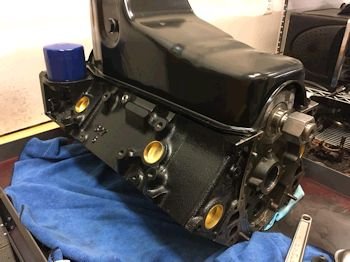
|
After the oil pump screen arrives I'll
bolt down the oil pan and make a final check for clearance. |
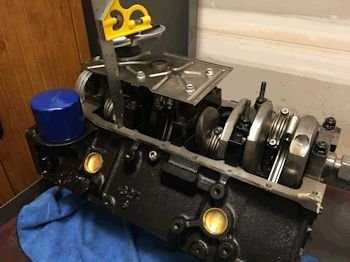
OK, oil pickup screen installed, (I press them in as factory).
|
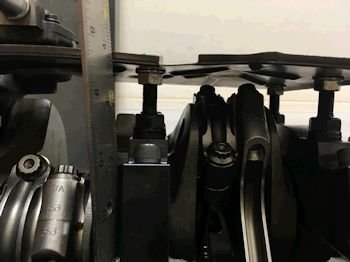 |

Now pan test fit for rod clearance with shop gasket. All
ok. I turn the crank to make sure.
|
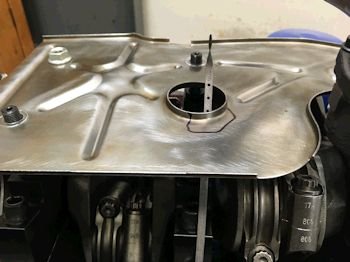
One last thing for the bottom end. This is my method to make
sure the oil dip stick does not push over into the path of the
crank/rods. Wherever the stick wants to go, I give it a
clear path. The stick wants to go where I marked. That
needs to be cut away. |
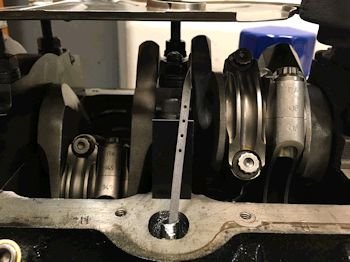
What I mean by stick path is that with splayed main caps you either
cut down the metal to let the stick past or you keep the cap whole
and let the stick slide wherever it goes. Some just don't run
a stick which is also a good method.
|
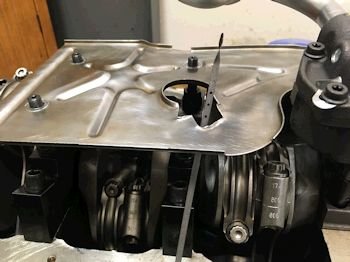
Trust me on this. The cuts in the tray look rough but there
are no burs and it's been cleaned in the parts washer after
cutting with tin snips. So now the stick will stay out of
the path of the crankshaft. I've seen more than a few
stroker engines with dipstick ends missing. |
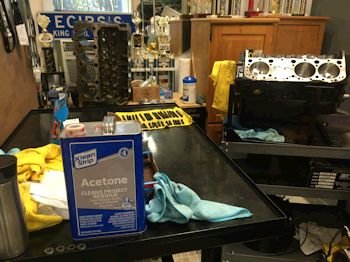
ARP head stud cleaning threads in parts washer and then wiping with
acetone. Then Right Stuff RTV.
|
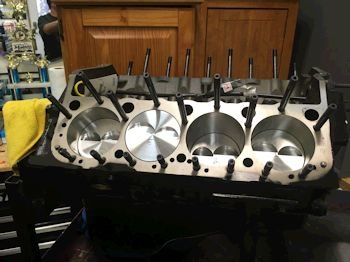
All finished. Next update you'll see the short block
wrapped and on a pallet. |
|
|
|